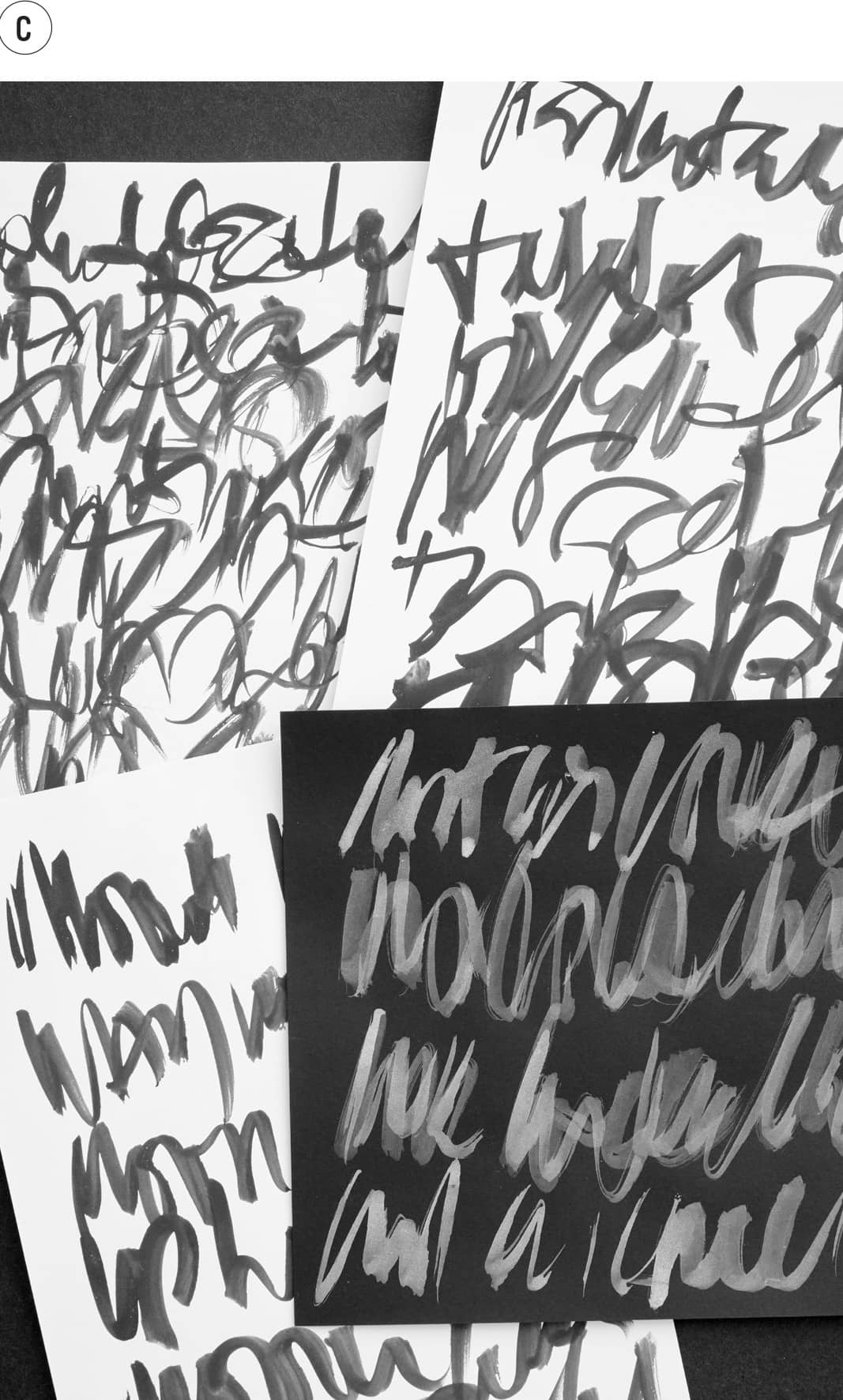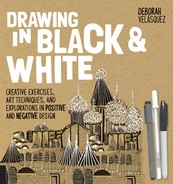Exercise 21:
SUMI BRUSH WRITING
IN THIS EXERCISE, YOU WILL DISCOVER THE BEAUTY OF YOUR OWN HANDWRITING USING A SUMI BRUSH. THIS IS A GREAT WAY TO ADD WORDS TO PIECES YOU CREATE OR MAKE WORD ART THAT STANDS ALONE. EXPRESS YOURSELF IN YOUR LINES, STROKES, AND CURVING MARKS—THIS IS YOUR EXPRESSIVE FLOW. THE RHYTHM OF YOUR HAND AS YOU WORK AND THE LETTERS YOU MAKE IN PRINT OR CURSIVE IS CALLED “YOUR HANDWRITING,” “YOUR HAND,” OR “YOUR STYLE.”
MATERIALS
Newspaper or large craft paper
Black gouache or acrylic ink
Palette
Inexpensive brush for mixing
Sumi brush (I use a 2, 4, or 6.)
30 or more sheets copy paper
A favorite quotation or word
Watercolor paper for final work


1. Cover your work space with newspaper or large craft paper.
2. Put a few generous dots of gouache onto your palette and slowly add water. Mix the gouache to a creamy, yogurt-like consistency. Use an inexpensive brush to mix the paint.
3. Load the Sumi brush with paint. Use the edge of your palette and twirl the brush to get excess paint off the brush and regain the point.
4. Hold the brush like a pencil or perfectly perpendicular to your writing sheet. Find what is comfortable for you. Stand and put your whole body into the work.

5. Your first exercise is line work. Make fine, medium, and thick lines with the tip of the brush. Pull the brush left to right across the page and make linear rows from the top to the bottom of the paper. You will get a sense of how long your loaded brush paints until you have to reload. Make five pages. (See A.)

6. Your second exercise is making thick and thin lines within one row. Load your brush with paint. Pull and push your brush across the page without lifting it off the paper. Repeat the push-pull rhythm at least three to five times in one line. Go left to right across the page and make rows from the top to the bottom of the page. Make five pages. (See B.)

7. Your third exercise is making loops over and under with circular motions. Painting motions in this exercise emulate cursive writing. Load your brush with paint. Fill your page with loops. Move your brush clockwise for a few strokes and counterclockwise for a few strokes. Make five pages. This exercise is similar to an approach called Asemic writing, which fuses the look of cursive writing with abstract art—the words themselves don’t have meaning, only the art behind it does. You can make “pretend” writing for fun as well. (See C.)
8. Now you are ready to jump into a word or alphabet exercise. Practice writing words or the alphabet in cursive or print. If certain letters speak to you, draw those for fun; my favorite letters are a and e.
9. Start with your name. Try the alphabet in uppercase and lowercase, and then mix it up.
10. Dance with the rhythm of your brush as it glides on the page. Play with scale and make some letters larger or smaller than others for interest. Remember to hold the brush like a pencil or perfectly perpendicular to your writing sheet. Find what is comfortable as you connect the letters. Pay attention to how many letters you can put on paper before reloading your paintbrush, which will come in handy when you make your final art. By the end of these exercises, you will see your personality “type.”
11. For your final art piece, paint your favorite quotation on watercolor paper.
12. To clean up, rinse your brush with warm water, pull the bristles to make the tip, and lay it horizontally to dry.

